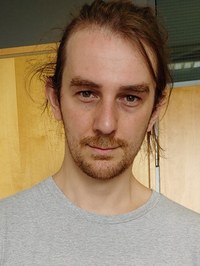Dr. Benjamin Heyde

Dr. Benjamin Heyde
Scientific Researcher
Department of Soil Science and Soil Conservation, iFZ
Heinrich-Buff-Ring 26-32
35392 Giessen, Germany
Room: B226
Phone: +49(0)641 99 37115
Fax: +49(0)641 99 37109
Email: Benjamin.Heyde@umwelt.uni-giessen.de
Projects/ Fields of work
- Fate of disinfectants (quaternary ammonium compounds) and antibiotics in soils
- (GC/MS, HPLC/MSMS, HPLC/DAD, HPLC/FLD)
- Clay minerals in soils and sediments – analysis (XRD)
- Project: Release and dissipation of antibiotics and disinfectants in different soil types as influenced by irrigation water quality (Sub-Project of FOR 5095), Coordination FOR 5095
CV
- 2021 PhD (Dr. rer. nat.), JLU Giessen
Quaternary alkylammonium disinfectants in soil: Accumulation, sorption and its influence on toxicological effects towards bacteria - 2012 - 2015 Master-Study of Environmental and Resource Management, JLU Giessen
Master-Thesis: Influence of interlayer cations on HCB sorption to clay minerals - 2008 - 2012 Bachelor-Study of Environmental Management, JLU Giessen
Bachelor-Thesis: Wohnen in der Stadt oder im Umland: Kalkulation von Wohn- und Fahrtkosten - 06/2015 - 10/2016 Academic assistant at the Institute of Soil Science and Soil Conservation
- Since 10/2016 Scientific researcher at the Institute of Soil Science and Soil Conservation
Peer-reviewed publications
Diagboya PN, Heyde BJ, Düring RA. 2023. Efficient decontamination of aqueous glyphosate using Santa Barbara Amorphous-15 (SBA-15) and graphene oxide-SBA-15 poly-amidoamine functionalized composites. Chemical Engineering Journal
Böhm L, Grančič P, Scholtzová E, Heyde BJ, Düring R-A, Siemens J, Gerzabek MH, Tunega D. 2022. Adsorption of the hydrophobic organic pollutant hexachlorobenzene to phyllosilicate minerals. Environmental Science and Pollution Research.
Wolters B, Hauschild K, Blau K, Mulder I, Heyde BJ, Sørensen SJ, Siemens J, Jechalke S, Smalla K, Nesme J. 2022. Biosolids for safe land application: does wastewater treatment plant size matters when considering antibiotics, pollutants, microbiome, mobile genetic elements and associated resistance genes?
Heyde BJ, Anders A, Siebe C, Siemens J, Mulder I. 2021. Quaternary alkylammonium disinfectant concentrations in soils rise exponentially after long-term wastewater irrigation. Environmental Research Letters 16: 64002.
Heyde BJ, Glaeser SP, Bisping L, Kirchberg K, Ellinghaus R, Siemens J, Mulder I. 2020. Smectite clay minerals reduce the acute toxicity of quaternary alkylammonium compounds towards potentially pathogenic bacterial taxa present in manure and soil. Scientific Reports 10: 15397.
Heyde BJ, Barthel A, Siemens J, Mulder I. 2020. A fast and robust method for the extraction and analysis of quaternary alkyl ammonium compounds from soil and sewage sludge. PLoS ONE 15: e0237020.
Steckenmesser D, Vogel C, Böhm L, Heyde B, Adam C. 2018. Fate of heavy metals and polycyclic aromatic hydrocarbons (PAH) in sewage sludge carbonisates and ashes – A risk assessment to a thermochemical phosphorus-recycling process. Waste Management 78: 576–587.
